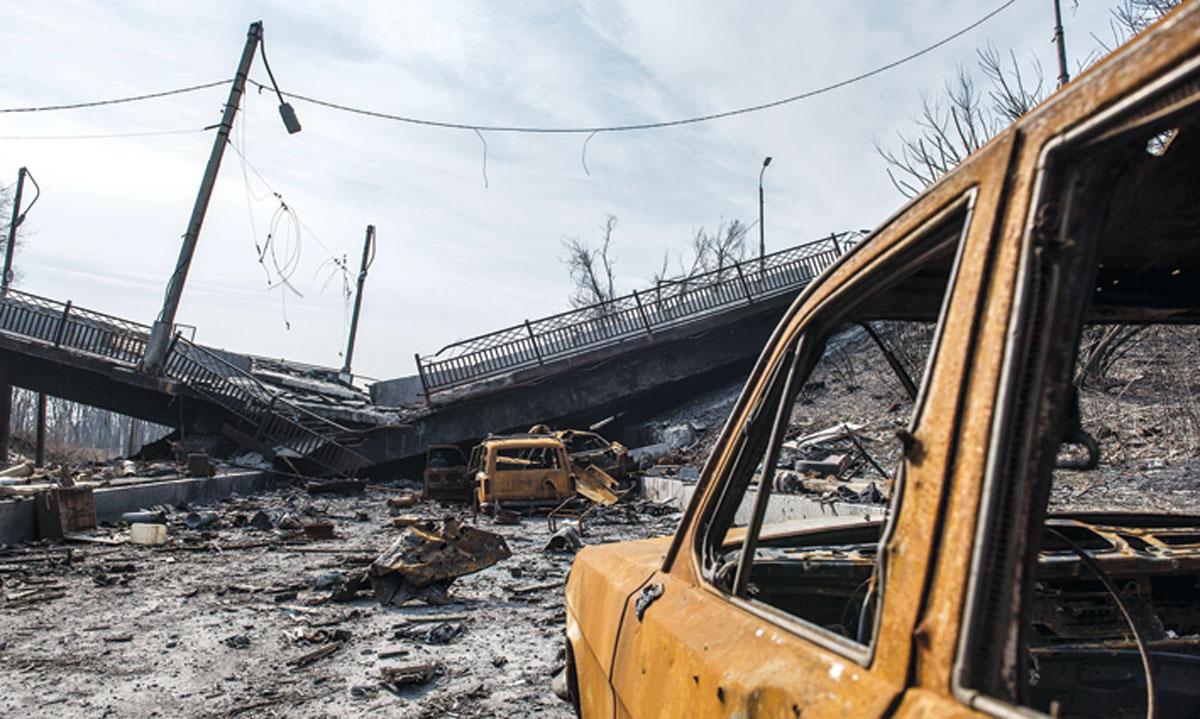Africa-Press – Mauritius. The annual report by the World Meteorological Organization (WMO) released last week ahead of the COP27 summit in Egypt from 6-18 November gives details of climate indicators such as temperatures, ocean heat, ocean acidification, sea level rise, sea ice glaciers and extreme weather.
It warns that the extreme consequences of global warming are appearing faster than expected. Time Is running out to avert a harrowing future for people across the planet. It could soon become much harder to cope.
The hikes in the atmospheric concentration of all three greenhouse gases, namely carbon dioxide, methane and nitrous oxide, were higher than the average increase over the past decade. Concentrations of carbon dioxide rose to 415.7 parts per million, a level not seen since at least three million years ago when Earth was much warmer.
Why the war in Ukraine is also a make-or-break moment for climate change.
Pic – TED Ideas WMO Secretary-General Petteri Taalas said that the continuing rise in concentrations of the main heat-trapping gases which are now all at new record levels shows that the world is facing the threat of an imminent climate change catastrophe.
He called for an urgent transformation in energy, industry and transport systems away from fossil fuels and added that ‘the needed changes are economically affordable and technically possible’.
The report thus aims at spurring world leaders to urgently take the potent remedial actions needed to cap global temperature rises to 1.5 degrees Celsius above pre-industrial levels.
According to the WMO, there is a 50:50 chance of average global temperature reaching 1.5 degrees Celsius above pre-industrial levels in the next five years and the likelihood is increasing with time.
Many scientific reports estimate that temperatures could rise by 3°C in the next thirty years, which would cause sea levels to rise all over the world.
To make us aware of the climate emergency we find ourselves in, scientists have portrayed how some iconic places on our planet could look like in the aftermath of extreme climate change conditions if we do not act now. Will world leaders finally wake up to the crying urgency of safeguarding planet Earth for the young and future generations?
Senseless war
The senseless and protracted war in Ukraine is also having an adverse impact on the world’s response to climate change. It distracts the world leaders’ attention and focus away from drastically cutting down carbon emissions, taking robust actions to limit the rise in global temperature to 1.5 degrees Celsius and accelerating the replacement of highly polluting coal and fossil fuels by renewable and green energy.
Instead, tens of billions of dollars of advanced weaponry provided to Ukraine by the US, the EU and NATO countries are inordinately prolonging the war amid more and more demands for more arms by Ukraine.
For its part, Russia is mobilizing more troops and raining precision strikes of missiles and drones on military and communication installations, hydroelectric plants and other critical energy and water infrastructure across Ukraine thus depriving people of vital utilities ahead of winter.
The war has also divided and polarized the world. The collateral victims of this endless war in Ukraine as well as climate change driven extreme weather conditions, more destructive storms, torrential rains, floods, landslides, forest fires and higher temperatures are people.
Escalating food and energy prices, rising inflation and the erosion of purchasing power caused by the war in Ukraine have resulted in unprecedented difficulties and distress among people.
According to UNCTAD, billions of people face the greatest cost of living crisis in a generation. It adversely affects lives and livelihoods and hobbles prospects of a rapid socio-economic recovery in the aftermath of Covid-19.
The IMF has forecast that global growth will fall from 6.0 percent in 2021 to 3.2 percent in 2022 and 2.7 percent in 2023, which, with the exception of the global financial crisis and the worst phase of the Covid-19 pandemic, is the weakest growth rate registered since 2001. Global inflation is forecast to rise from 4.7 percent in 2021 to 8.8 percent in 2022.
For More News And Analysis About Mauritius Follow Africa-Press







